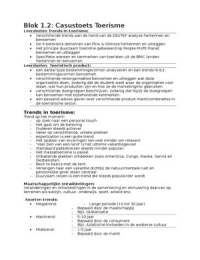Samenvatting
Samenvatting Organization Theory (441074-B-6)
- Vak
- Instelling
Alle lectures van OT aangevuld met alle papers die je moet lezen voor het tentamen. Dit is dus alles wat je nodig hebt voor het tentamen in een bestand. Vooral in het Engels maar het is aangevuld met wat Nederlandse zinnen.
[Meer zien]












